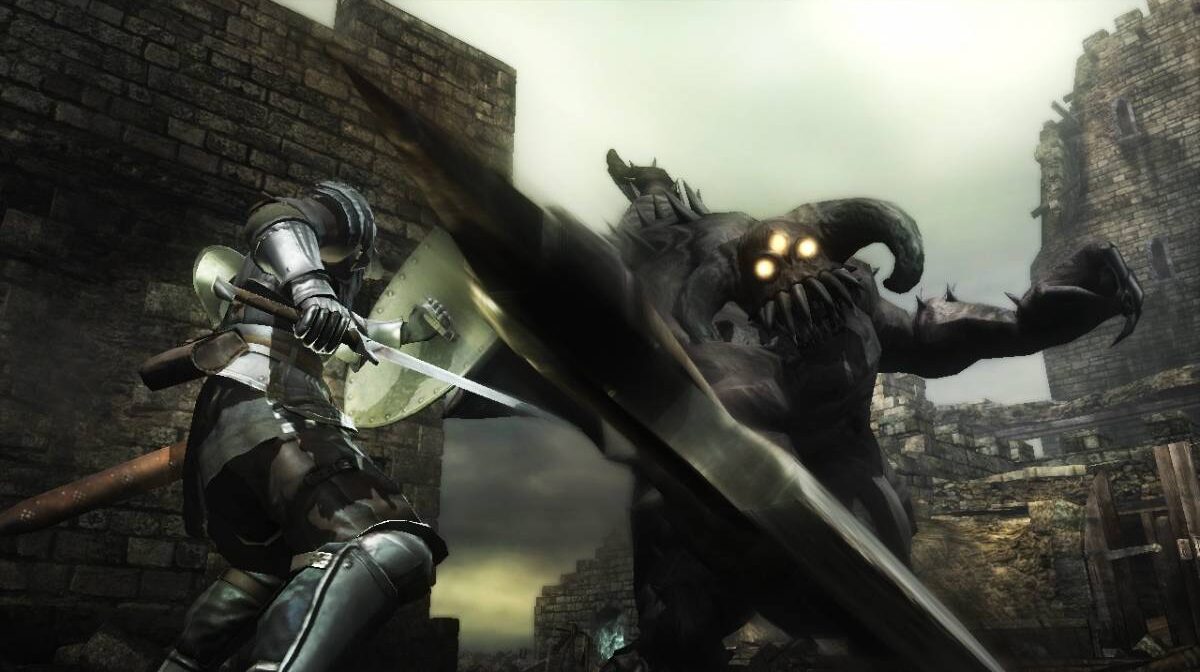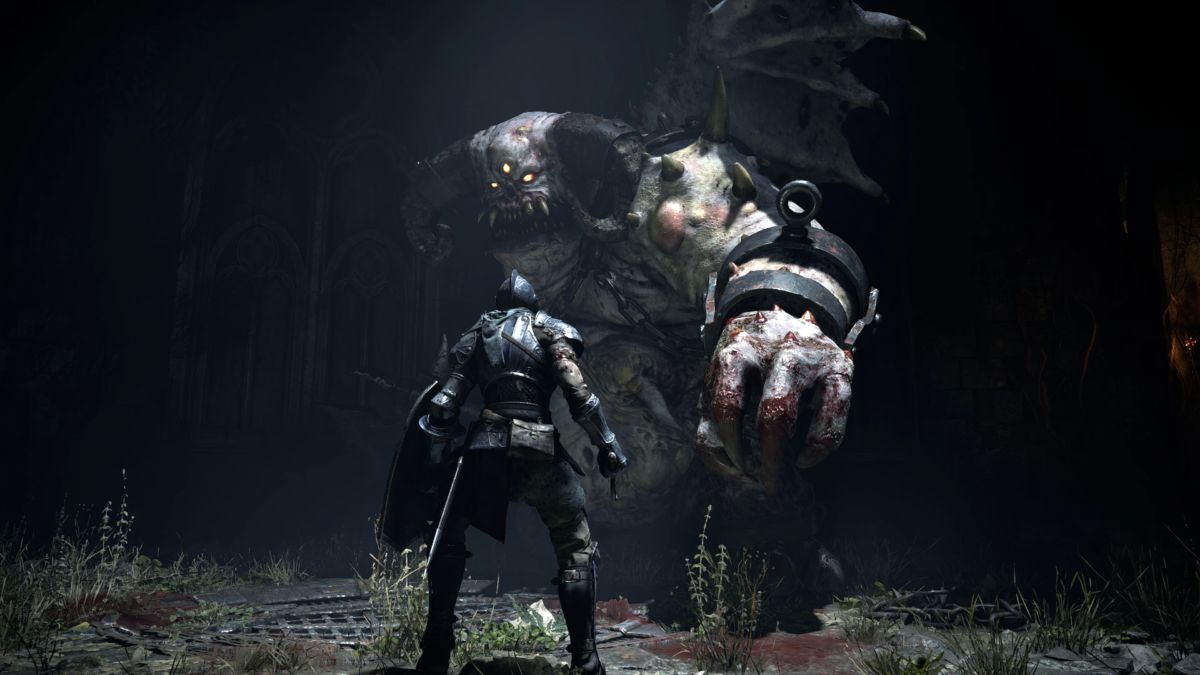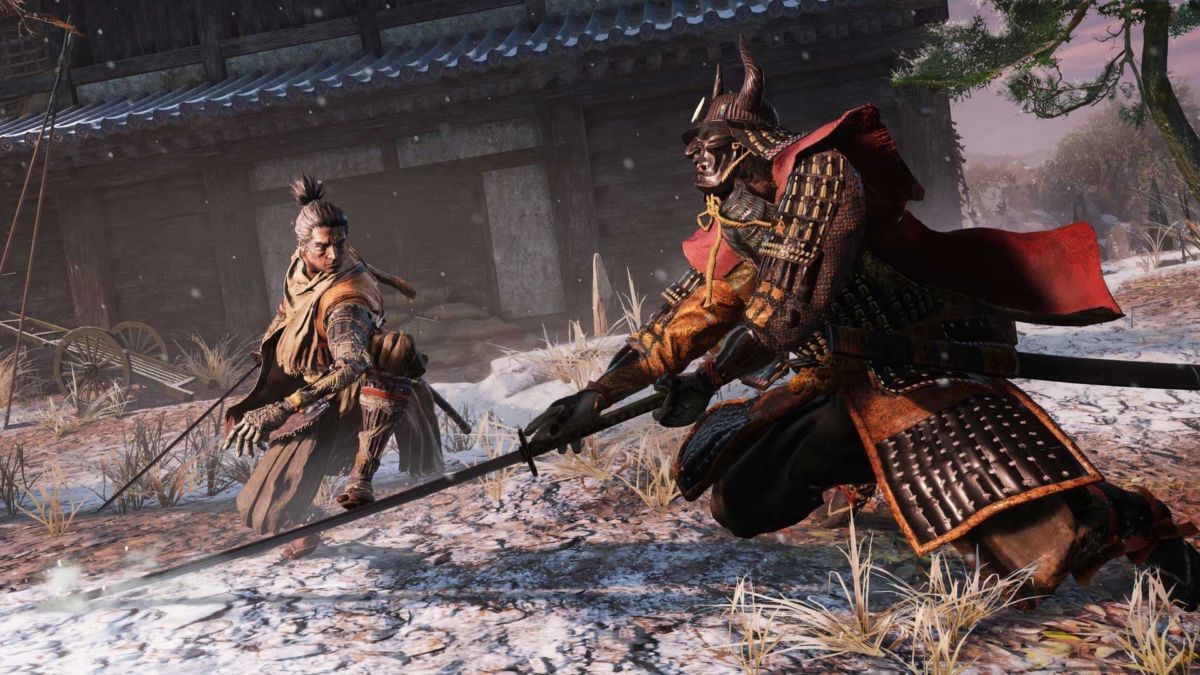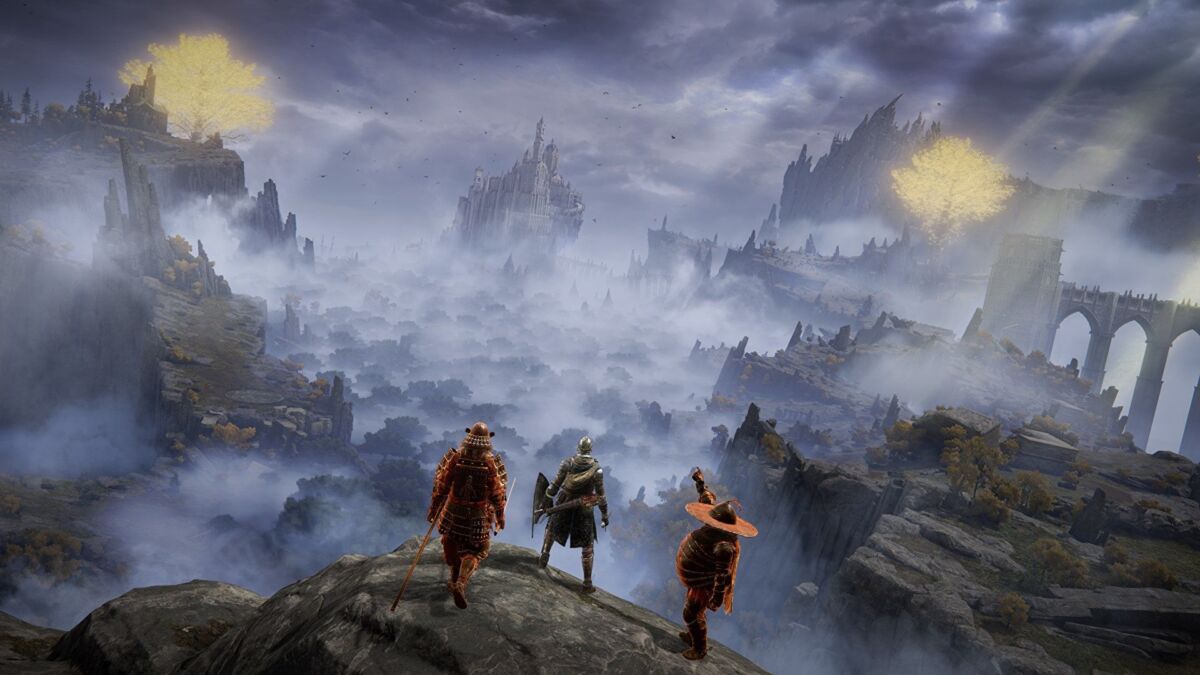In 2009, FromSoftware, most well known for their Armored Core series, birthed a new niche that was heavily inspired by their earlier work on the King’s Field series. Little did they know the Soulslike genre they created would pave a successful path of highly polished and downright addictive series of games, each based around a specific mechanic. Hidetaka Miyazaki’s creation has since found a fan base so large that each new entry grows in ambition and has inspired countless other developers to have a crack at the Soulslike formula, as seen with the more recent Lies of P and Lords of the Fallen.
If you’ve lived under a rock the past few years and it’s not because you’re too terrified to pick up the controller and give that boss another try, then a Soulsborne/Soulslike game is typically a brutal action RPG with an emphasis on boss hunting. Everything is out to get you, from challenging bosses and sneaky enemies waiting to ambush you to the level itself trying to kill you with its infuriating platforming. Even the loot wants you dead. You go to grab a nice bit of gear, but oh boy, now you’re being chomped up.
After powering through multiple controllers and dying too many times to shamefully admit, here are the Soulring? Sekiroring? Soulbornekiroring? Ugh, here are all the Soulsborne games, plus the others that don’t fit the title, ranked from worst to best.
8. Dark Souls II

Platform(s): PC, PS3, PS4, Xbox 360, Xbox One
Oh, Dark Souls II, the problem child of the Souls series that suffered a troubled development. The only game on this list that Miyazaki took a backseat on to not stifle the studio’s creativity and to work on other FromSoftware projects, such as Bloodborne.
The result of this is a bit of a mess, with poor level design and questionable design decisions, like punishing the player who dies too much by lowering their maximum health after each subsequent death.
Dark Souls II just lost the point of what made the previous entries so successful and focused on the game’s difficulty. It was hard for the sake of being hard, which is a sentiment many shared at the time. With its frustrating platforming, outrageously difficult enemy placements that can feel cheap, and lengthy runs to the boss from the bonfire on repeated deaths plagued the overall experience.
The game’s difficulty is aggravating rather than a balance of challenge and learnable encounters. Not every Soulsborne game achieves this with every fight, mind you, but Dark Souls II is consistently beating you down in unfair or tedious ways.
It’s not all doom and gloom, though, as it does, in its own twisted way, have charm, especially regarding the lore. Dark Souls II also has the most DLC support and is the only Souls game to receive a “Director’s Cut” overhaul in the Scholar of the First Sin special edition. This means enemy placements have been reworked, safe areas from the base game are now dangerous, and a new invader has been added to create a distinguishable experience for Dark Souls II.
7. Demon’s Souls

Platform(s): PS3
The father of the Souls games, Demon’s Souls is where it all began, adding a new twist to the action-RPG genre by designing a game that blends strict difficulty with the adventure of a rather short lifetime. In early 2018, the plug was pulled on Demon’s Souls online, a sad yet inevitable day for fans who often go back to play this game. Fortunately, it’s mostly a solo experience, but it’s hard not to miss the jolly cooperation and funny messages players would leave behind for others on the PS3.
The game is very dark, and not just in tone. You might want to turn your screen brightness all the way up, as part of the difficulty is trying to see what lurks ahead. In a strange twist, that’s also what makes Demon’s Souls so tense, especially when you’re carrying too many souls and plunging through the darkness in an uncharted area.
Moments like these make Demon’s Souls special, and the game never feels cheap. It teaches you its core mechanics early on; it allows you to learn enemy placements and lets you experiment with different strategies and playstyles.
Fighting huge bosses and strong enemies doesn’t feel as electrifying as the later entries, and some of the bosses feature tedious design choices. The dragon on the bridge, which can only be killed by shooting an arrow every time it passes by, serves as the best example.
As a result, the difficulty can feel inconsistent, with the most punishing feature happening after death. Your health is sliced in half until you regain your humanity by beating the next boss or using an item that’s in relatively short supply. It goes against Demon’s Soul’s own philosophy of trying until you make it, but it does reward skill. It’s sometimes refreshing since you’re bound to spend most of your first playthrough at half health.
It may not be the best Souls game on this list, but it was the first, and that alone is an accomplishment in and of itself.
6. Demon’s Souls Remake

Platform(s): PS5
Yes, technically this isn’t by FromSoftware themselves, but considering how faithful a remake it is, they should at least get the credit.
The first thing that stands out in the Demon’s Souls remake is the gorgeous graphics and impressive vistas you’ll find yourself in. Lighting, particle effects, and sound design are all top-notch, as shown with every blood-splattering slice, bone-crunching slam, and burst of magic that explodes into tiny particles.
Haptic feedback is also a feature that helps add weight to the experience, and the SSD renders fast travel and load times almost non-existent, allowing for smoother gameplay compared to the original.
The updated visuals aren’t perfect, mind you, with some over-animated faces that really exaggerate human emotion in an uncanny way that takes away from the gloomy atmosphere present in the game.
Since this is a remake of the old Demon’s Souls, there is some dated game design and boss mechanics that could have been revamped a little more. Most bosses are relatively easy for the average Souls fan and utilise a slow and almost clunky move set that won’t take you long to figure out.
The Dragon God fight, for instance, is still the same “pull two levers and win” fight that many fans didn’t enjoy. It would have been nice if Bluepoint tried to rework some of these flawed mechanics to offer a few surprises to returning fans, though it is challenging to balance the new with what made the original enjoyable.
Since the original Demon’s Souls online was ditched in 2018, the online is back for the remake in the form of co-op, PVP, and message dropping to help others or trick them to their doom. It’s nice to see that Demon’s Souls is playable online once again, and now the Slayer of Demons isn’t truly alone anymore.
5. Dark Souls

Platform(s): PC, PS3, PS4, Xbox 360, Xbox One, Switch
The game that put the Souls genre on the map nowadays gives a strong sense of nostalgia to those who first awakened in the Undead Asylum back in 2011. Dark Souls is an intelligent dungeon crawler game with a cleverly interconnected set of areas, each offering shortcuts to make the next run-through less time-consuming. Bosses themselves go from balanced, fun, and challenging to what in the dreaded pits of Blighttown were you thinking FromSoft?
Where the game finds its shortcomings is its seemingly rushed last half, leading to many areas feeling unfinished. Enemies are chucked in without much thought in areas like Lost Izalith, and others, such as Ash Lake, feel like a blank canvas, missing assets and well-thought-out enemy composition to flesh out the otherwise rich and lore-filled world of Dark Souls. The game is also home to the worst-rated boss in the entire series. I’m looking at you, Bed of Chaos. Get your dumb branches away from me.
The combat nowadays is perhaps a bit clunky, with the swing of the weapon eating up so much stamina that you slowly exchange blows rather than engage in the electrifying gameplay the later entries are known for. However, it heavily improved upon Demon’s Souls’ even clunkier design and ushered in snappier controls that made gameplay feel more enjoyable in comparison.
What areas you explore, what bosses you face, and how you build your character are largely left to the player to figure out. This means Dark Souls is heavily replayable, with its multiple endings and options to tackle some of the more challenging areas underleveled if you’re brave or crazy enough. The game’s freedom is immense and is the crowning achievement that Dark Souls 1 acquired.
There’s even the Artorias of the Abyss DLC, which offers the best bosses in the game and gives a fitting end to the lore of Dark Souls. It’s worth checking out the Remastered version for the best place to experience everything Dark Souls has to offer.
While there is a remaster for Dark Souls, a remake is long overdue to let the beautiful art direction shine with modern graphics and rethink the last half of the game. There’s so much potential with this game, and the fun boss encounters and genius-level design in the first half would bring about a fresh experience for both fans of the original and newcomers alike. Praise the sun, y’all.
4. Dark Souls III

Platform(s): PC, PS4, Xbox One
Arguably the best Dark Souls game in the series, Dark Souls III is a huge step up from Dark Souls II and tries to return to the formula of what made the first game special. This game feels more like a sequel to Dark Souls than Dark Souls II did, and it is a joy to travel to the many different areas with gorgeous skyboxes that stop you in your tracks and make you spam the screenshot button.
In some ways, Dark Souls III feels like a love letter to the first Dark Souls, with so many nods and callbacks to the first game that will leave you geeking out at every reference caught. References such as finding the mischievous and untrustworthy Patches, or the similarities between the final boss of both games, helps make Dark Souls III feel special.
Dark Souls III has a phenomenal soundtrack that skyrockets the tension during boss fights and the best combat design in the series, paired with a rising boss quality to match. The game reintroduces the mana bar system from Demon’s Souls that depletes when using spells, which is much more intuitive than the fixed number of uses the previous games had on the magic system.
Switching Estus Flasks for more magic over healing or vice versa adds to the player’s choice. Even if you’re not a magic user, each weapon can use a special attack that will exchange some of that mana for a powerful attack. There’s so many ways to play, even within the set builds, and it’s incredibly satisfying to hack away at your enemies health bar.
To top it all off, there are two DLC packs (Ashes of Ariandel and The Ringed City) that add more epic boss fights and visually pleasing areas. While not perfect, they complete the package and give the Dark Souls series a fitting end to its story.
3. Bloodborne

Platform(s): PS4
You cannot deny that Bloodborne is one of FromSoftware’s best games. The player takes on the role of a Hunter in a Gothic horror that quickly turns into a cosmic madness tale straight out of the pages of Lovecraft himself. Blending Soulslike action and cosmic horror created the gory bundle of creativity that is Bloodborne, and it’s been considered one of the best PS4 exclusives ever made.
Bloodborne brings back the tight, interconnected level design that the original Dark Souls had and breathes new life into the formula with a rich world full of ravenous bosses, encounters, and a gripping story that ties it all together in a neat, hairy, bloody bow. If you thought Dark Souls was bleak, then, oh boy, this world gets a lot darker — literally.
Combat is also faster-paced, with FromSoftware prying the defensive shields from Dark Souls fans’ cold, hollow hands and forcing them to adapt to a more aggressive play style through Bloodborne’s rally system. A high-risk, high-reward method of play that allows players to recover a portion of their health gauge by viciously attacking the enemy who damaged you. Not only is it more fun to zip around enemy attacks through a refined dodge mechanic, but it taught many players who liked to turtle in Dark Souls that you can also play another way.
Pair all that with an optional, though highly recommended, DLC, and you can experience some of the best boss fights FromSoftware has ever created. Ludwig, Lady Maria, and even the nutcase placenta-swinging Orphan of Kos are all masterfully designed, fast-paced, and a great addition to the lore. We don’t talk about the Living Failures, though. Clue’s in the name.
Bloodborne has all the ingredients for a recipe for success, yet it’s mind-boggling that the game has not been remastered yet. The only thing holding it back in today’s world are those frames. Come on, Miyazaki, break those 30 FPS shackles and port Bloodborne to modern hardware.
2. Sekiro: Shadows Die Twice

Platform(s): PC, PS4, Xbox One
Sekiro: Shadows Die Twice is the most unique entry on this list, as the vibe changes from the other dark and gloomy games to a world of colour, mystique, and narrative. The game takes place in a reimagined Japan, specifically during the Sengoku period, which sends players through gorgeous rich-colour forests, abstract buildings with intricate architecture, and breathtaking underwater caves in contrast to the gothic and European castles we’re used to exploring.
Sekiro is the only Soulslike game that places a greater emphasis on story, with its fleshed-out characters, narrative-driven dialogue, and even for the first time in a Soulsborne game, a hand-held story and mechanic-driven tutorial. It’s also the first time FromSoftware has ditched the character customisation feature and instead lets players roleplay as the same character known as Wolf.
To some, this could be a turnoff, especially if you’re rooted in the formula FromSoftware uses when making the Souls games. To others, it’s a breath of fresh air that reinvents the known formula and arguably gives players more tools to tackle challenging threats.
The combat is nothing short of masterful and it’s so damn satisfying to parry and deflect enemy swings with a pleasing ting of the blade. You have different arms to use in combat, some of which break shields, stun enemies, or shoot projectiles from afar. You even obtain a grapple to swing onto high ledges and can take down enemies from above in lethal stealth.
For once, you’re not whittling away at giant health bars and jumping out of the way of every attack. Instead, Sekiro offers a posture system that builds up when you successfully deflect an attack and when opponents block your attacks. When the bar maxes out, the opponent will be stunned, and you can deliver a killing blow that will take out all their health. Some enemies have multiple health bars, which are indicated by the red circles above the bar. Additionally, stealth attacks can also achieve the same thing, which can cut a fight in half on some of the mini-bosses.
You’ll need to use those stealth attack shortcuts, though, as Sekiro’s difficulty is brutal. Arguably, it’s the most difficult game on this list. You can’t just farm enemies to overpower a boss you’re stuck on like you can in the other Souls games. Instead, you must rely on instinct and quick reflexes to parry, jump, or dodge your way through a flurry of attacks.
Sekiro: Shadows Die Twice will punish you for trying to dodge every attack, and if you have played the other Souls games, you will have a much more difficult time adjusting. You’ll need to unlearn all your habits from playing those games and embrace the new fighting style, but once you do, it’s worth it.
1. Elden Ring

Platform(s): PC, PS4, PS5, Xbox One, Xbox Series X & S
Elden Ring is the culmination of all of FromSoftware’s work, bringing everything people love from the other Souls games and translating that into an open-world environment. Everything they’ve learned since players clocked their first hour in Demon Souls has come to fruition, and numerous awards have been given out for their Soulsborne games. The posture system from Sekiro is present in the form of the hidden stance mechanic that staggers enemies when you flurry your opponents with aggression, the fluidity of dodging from Bloodborne is here if you build right, hiding behind a shield like many of us did in the Dark Souls series playstyle is a viable option, and those who prefer to keep their distance can obliterate foes with an abundance of spells.
Elden Ring is a complete package with greater emphasis on freedom this time around, which almost feels intimidating. Not because of its difficulty, but because of just how big this game is. From the moment you enter Limgrave, you’re met with an immeasurable view that stretches to all four corners of the screen. This is the first region of many, and you could easily clock in 100 hours in your first playthrough just by how much there is to explore.
Fortunately, to combat the vast distances your poor, Tarnished legs would have to travel, you have access to the trusty spirit-steed Torrent, which makes traversal and backtracking so much more fun. Not to mention mounted combat, which is another great new addition to match the openness of Elden Ring’s expansive map.
In a world so rich with lore, enemy variety, locations, and, of course, a million ways to die, a game like Elden Ring will keep you busy for hours. It accomplishes all that and so much more with its diverse gameplay, endless amounts of customisation and even PVP. With the Shadow of the Erdtree DLC on the horizon to take this game to greater heights, there’s never been a better time to dive in and play through the vast world of Elden Ring, which stands as the greatest Soulslike game of all time.
We can’t wait to see what they have in store next.
READ MORE: Elden Ring’s Brilliance Speaks For Itself | Best Games Of 2022
Some of the coverage you find on Cultured Vultures contains affiliate links, which provide us with small commissions based on purchases made from visiting our site.

